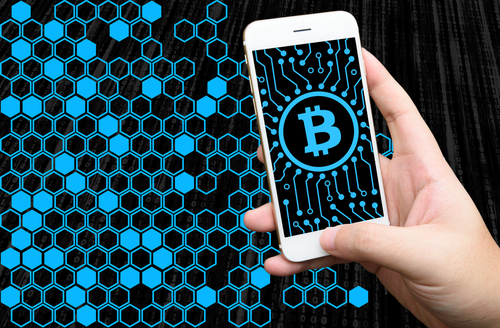What can the blockchain do to help protect against fraud, counterfeiting and theft?
BSI Staff Writer
Published date: |
|
Modified date: |
|
 Life would be much easier if diamonds could speak. When you buy a diamond ring, for example, the stone could tell you if it had been ethically sourced, or mined by forced labourers working in terrible conditions for a local warlord. If the diamond was stolen, it could blow the whistle on the thieves any time they tried to sell it on.
Life would be much easier if diamonds could speak. When you buy a diamond ring, for example, the stone could tell you if it had been ethically sourced, or mined by forced labourers working in terrible conditions for a local warlord. If the diamond was stolen, it could blow the whistle on the thieves any time they tried to sell it on.
Unfortunately, we don’t live in that world, but blockchain technology might be able to offer us the next best thing. Blockchain is the system behind digital currencies such as bitcoin. It works by creating a digital ledger of transactions which is stored across a network, rather than hosted by a single central entity such as a bank. This structure makes it extremely difficult to conceal transactions.
Many established companies are seeking ways to use the blockchain principle to protect against theft, fraud and counterfeiting.
How the blockchain works
As its name suggests, a blockchain is a series of linked blocks of data about transactions. Each block links to a previous block, hence the chain, and is marked by a timestamp confirming when the transaction in question took place.
These chains of data are stored as a distributed database, meaning they are hosted across a network of participating clients. Each client can access the network, lodge new transactions on it, verify transactions and compete to build new blocks.
The database also verifies data using a scoring algorithm that intervenes where there are differing versions of the same ledger. The higher scoring version, which is usually the one with the newest block addition, is favoured and overwrites competing versions of the log.
The decentralized nature of the blockchain gives it transparency; it’s not owned by any particular authority, but spread across a network. This is in contrast to traditional file-based record keeping systems that can more readily be concealed, falsified or misrepresented.
The blockchain has been described by David Treat, managing director of financial services at Accenture, as 'a technology which enables people to confidently and securely share access to data because they are able to prove to themselves mathematically that it hasn’t been tampered with.'[i]
Clean diamonds through certification systems
IBM is one of the companies seeking to explore how the blockchain can be used outside of the world of digital currencies. A platform launched by IBM allows clients to use blockchain technology to verify their supply chains.
In a service aimed at companies dealing with high-value items and complex supply chains, IBM lets customers use its LinuxOne system to provide increased transparency about provenance and sourcing.
For example, Everledger is an IBM client using the platform to trace diamonds. Until now, diamonds have been traded using paper records in a system based on trust that documents are bona fide. The problem is, there are many murky players in the diamond trade. This leads to consumer concern about where their jewels came from. The IBM system creates a permanent record tracing diamonds’ journey from the ground to the jeweller, providing increased customer confidence.
The Everledger system records key characteristics of the diamond, such as cut, clarity and serial number. If a diamond is stolen, thieves used to be able to sell it in a number of different trading sites: local jewellers, eBay, Amazon and so on. They could also take out insurance while it was within their possession. The blockchain system provides a single traceability mechanism to all these sites to increase visibility. The stolen goods could be picked up at multiple points on their journey, even years later.
Following the tracks of your trainers
Elsewhere, companies are deploying the blockchain to prevent counterfeiting, which is an increasingly serious global problem; in the US, trainers make up around 40% of all counterfeit goods, costing manufacturers an estimated $240bn.[ii]
A New York-based trainer brand, Greats, decided to tackle the problem. Greats use blockchain technology and an innovative tagging system to create shoes that are almost impossible to counterfeit. Each pair of shoes has a 3D-printed smart tag with a near-field communication (NFC) chip that can be scanned using a smart phone. The chip cannot be removed from the shoes without destroying them.
When the tag is scanned, the mobile app confirms the authenticity of the product and provides the history of everyone who ever owned the shoes. If the shoes are sold, the seller confirms this on the blockchain using an app.
This tagging system can be deployed on other high-value items such as handbags and designer fashion to address counterfeiting and give consumers increased confidence in the authenticity of their purchases.
Is blockchain safe from hackers?
One of the main concerns people have about digital currencies is that they seem so intangible. You can’t withdraw them from the bank or hold one in your hand; for the uninitiated, it seems like a fragile system.
For many years these worries were met with assurances that the blockchain was practically hack-proof, due to its dispersed nature. However a recent heist provided cause for concern. In August 2016, hackers stole $70m in bitcoin from a Hong Kong-based cryptocurrency exchange platform named Bitfinex.
As the currency is not underwritten by any central bank in the manner of other national currencies, all depositors shared the financial hit, losing 35% of the value of their deposits in the exchange. Account holders were offered tokens for later exchange or shares in the parent company to compensate for the loss.
A similar hack occurred in June 2016 with the Decentralized Autonomous Organization, an experiment in crowdsourced investing. The group raised $150m in ether, a cryptocurrency rival to bitcoin. The funds were stored on the ethereum blockchain.
Hackers managed to access the funds and transferred chunks of the currency, stealing around $79.6m from the fund. The value of the ether currency fell by 27% on discovery of the attack.[iii] Other cryptocurrencies such as bitcoin also fell in value.
A valuable, but not infallible tool
These recent hacks of blockchain systems show that it is not 100% proof against attack, which brings it into the company of every other known security system. However, blockchain does offer opportunities to improve on current systems which are based on plain trust or documentation.
While many of these technologies are in the proof-of-concept phase, inevitably there are multiple different approaches being used. However, as the technologies mature there will be plenty of opportunity for standardization. Some developers are working through open-source systems to help promote this collaborative dynamic.
One thing is for certain: we haven’t heard the last of the ‘trust machine’, which is what some people call the blockchain. As the technology matures, we will all be able to benefit from the advances in security that it will bring.
Click here to provide feedback

